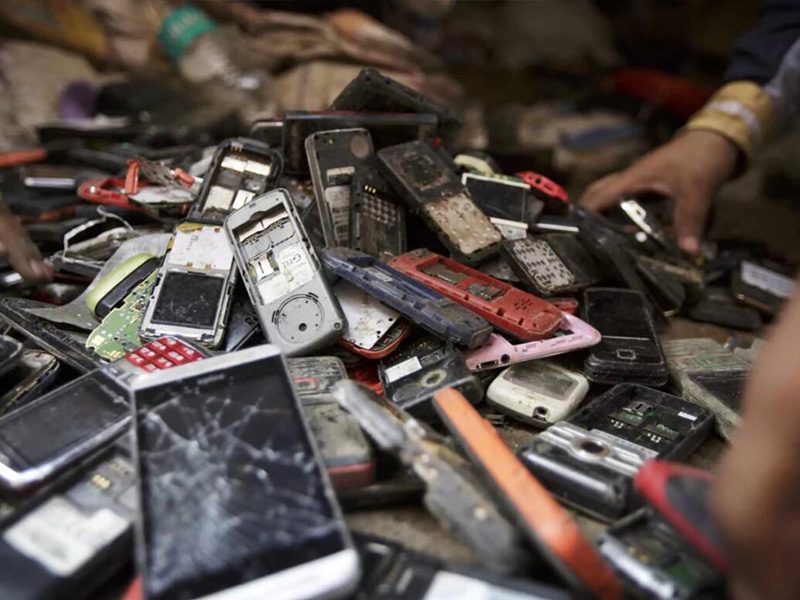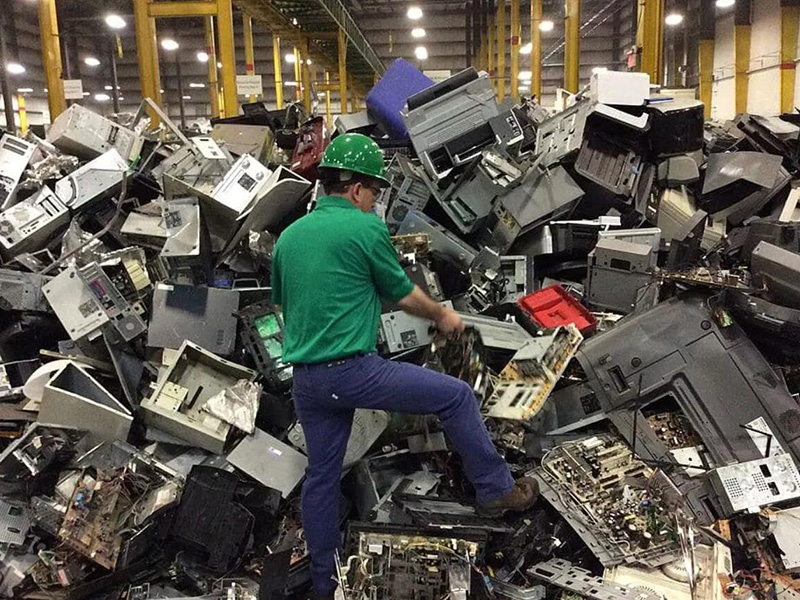
Quick Key Facts
E-waste is the fastest-growing waste stream in the world; between 50 and 60 million tons are produced every year.
The e-waste discarded in 2021 alone weighs more than the Great Wall of China: the heaviest man-made structure in the world.
75-80% of e-waste is shipped to countries in Africa and Asia, where poor and marginalized communities suffer health and environmental consequences.
Electronics contain hazardous materials like lead, mercury, and cadmium, which leach into the surrounding environment when placed in landfills, or when the products are burned by “backyard recyclers” in Global South trying to extract valuable materials like gold and copper.
Less than 20% of e-waste generated each year is properly recycled.
E-waste contains valuable materials that can be extracted through proper recycling. It’s estimated that unrecycled e-waste contains $57 billion worth of recoverable precious metals.
Only 25 US states and Washington, D.C. have some kind of e-waste legislation, either mandating the recycling of e-waste, banning disposal in landfills, or prohibiting export to other countries.
What is E-Waste?
E-waste – also called electronic waste, e-scrap, end-of-life electronics, or WEEE (Waste Electrical and Electronic Equipment) – is electronics that have been discarded, donated, or recycled. The term “waste,” however, is somewhat misleading; many items still have value in that they can be repurposed or recycled to extract desirable materials inside them.
Six waste categories are included under the umbrella term of “e-waste:” Temperature exchange equipment (like heating/cooling devices), screens and monitors, lamps, large equipment (like washing machines, dishwashers, copying and printing machines, etc.), small equipment (vacuum cleaners, microwaves, electronic toys and tools, radios), and small IT and telecommunication equipment (cell phones, GPSs, personal computers).
Unlike most general municipal waste, e-waste is extremely hazardous and contains toxic materials like beryllium, cadmium, mercury, and lead, so recycling these products requires intensive sorting and handling. E-waste – in part due to the complex requirements for disposal – is often exported to countries in the Global South, where it poses health and safety hazards for local people who mine valuable materials from end-of-life electronics.
Generation of E-Waste
E-waste is a growing waste stream: the fastest-growing in the world, according to Green Alliance, increasing by 21% between 2014 and 2019. Between 50 and 60 million tons are generated each year, which amounts to about 2-3% of annual global waste. While it might seem like an inconsequential percentage, the consequences of runaway e-waste production are extreme.
Why is There so Much?
When the iPhone was released in 2007, 1.4 million units were sold that year. Now, the same amount of phones are sold every 2.5 days. This growth is representative of our greater dependence upon electronics in all facets of the economy and daily life, from which our mounting e-waste stream arises. It’s estimated that 63.3 million US tons of electronic waste were discarded in 2021 – that’s heavier than the Great Wall of China, the heaviest human construction in the world – and it’s only expected to grow. In 2030, e-waste is projected to hit 81.6 million US tons: an amount that could fill more than 100 Empire State buildings.
Planned Obsolescence
Does it ever feel like new, updated cell phones and computers are coming out much faster than they used to? Not only is this true, but it’s a tactic intentionally employed by technology companies so that older models become outdated faster and faster. Even if a product works perfectly well, sometimes just the perception of it as “old” will drive replacement (called “perceived obsolescence”). On average, a person now only keeps a cell phone for about two to three years. Each new product release also comes with new chargers, adapters, and compatible products, making their older counterparts unusable and trash-bound.
But, some manufacturers will also deliberately design products to last for only a certain amount of time: a phenomenon known as “planned obsolescence.” Sometimes, the cost of repairing a failing phone or computer is actually more expensive than buying a new product: another intentional tactic to drive up purchasing. Oftentimes, new software updates are incompatible with older models, and as the world is upgrading to 5G, entire generations of cell phones will soon become obsolete.

E-Waste Recycling
An employee walks through electronic waste awaiting to be dismantled as electronic recyclable waste at the Electronic Recyclers International plant in Holliston, Massachusetts.
Because of the many toxic chemicals present in e-waste, discarded electronics must go through a complicated recycling process that involves separating their plastics, metals, and internal circuitry. E-waste recycling provides an alternative to throwing waste in landfills, where it leaches and causes a hazard to both human and environmental health. Recycling services are provided by some local and state governments – or federally, in some countries outside of the US – or by private recycling businesses.
Benefits of Recycling E-Waste
Along with hazardous toxins, e-waste also contains valuable materials that could be reused in future products. According to the EPA, recycling one million cell phones recovers over 35,000 pounds of copper, 772 pounds of silver, 75 pounds of gold, and 33 pounds of palladium. Extracting these materials has economic benefits; a 2018 study found that mining aluminum, copper, and gold is 13 times more expensive than collecting it from properly-recycled electronics
Lithium, for one, is used in many industries and is crucial for making the batteries of electric cars. Because of the huge demand for these vehicles paired with the slow extraction of the element, lithium is in short supply. Mining it from recycled e-waste will supply more to the market, keeping the price of electric cars from skyrocketing due to scarcity.
How is it Done?
The e-waste recycling process entails many steps in order to separate valuable materials from non-valuable and hazardous ones. First, the waste is sorted manually into different types and models and examined to see what can be reused either as parts or to form new products. What is left goes through a demanufacturing process whereby products are disassembled and hazardous material is removed. Photocopying machines, for example, contain toner that is very flammable and could cause explosions in later stages of the recycling process. The remaining non-hazardous waste is shredded in a machine, and from the shreds, valuable materials are removed; a giant magnet captures ferromagnetic materials like iron and steel. This process of finding and removing metals and other desirable materials is what makes the recycling industry profitable. Lastly, water is used to separate the remaining materials (plastic will float, while heavier items will fall).
TM-Machine specialized in the recovery of valuable raw materials from electronic waste with its shredding machinery and complete plants. Our machines are used in recycling plants to recover and recycle valuable and rare metals and materials from e-waste.
If you would like to benefit from our experience in the e waste recycling field and machinery, please contact one of our specialists. We will be happy to help you.

